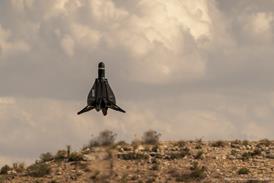The US Federal Aviation Administration is alerting operators of a wide range of business jets that input errors on their Honeywell Primus Epic flight management systems could cause an unexpected change of course.
Prompting the warning was an unidentified incident involving a flightcrew performing a standard terminal arrival at Salt Lake City International airport. Air traffic control uses standard terminal arrivals to help sequence aircraft for instrument approaches.
At some point during the area navigation arrival in question, the pilots reprogrammed the arrival portion of the aircraft's flight management system with a different landing runway, causing the aircraft's autopilot to reverse course back to the initial starting point for the standard terminal arrival, a navigation facility more than 50nm (90km) behind the aircraft.
A special airworthiness information bulletin, issued on 7 January, informs owners and operators of various AgustaWestland, Dassault, Gulfstream and Hawker Beechcraft helicopters and business jets to "ensure that their flightcrews are familiar with" a Honeywell service information letter published in October 2009, after the Salt Lake City incident. The bulletin also targets operators of Embraer regional jets as well as ATR turboprops.
Honeywell explains that while the FMS system worked as designed, a joint investigation with the FAA on the incident revealed that a more detailed explanation was required in the manual "to alert flightcrews on how FMS software is designed to handle such changes".
In particular, crews are now instructed to place the autopilot in "heading" mode with the aircraft's current heading until the FMS flightplan has been modified to match the current aircraft position in the procedure.
The FAA says the issue, at this time, is not "an unsafe condition" that would warrant an airworthiness directive.
Source: Flight International























